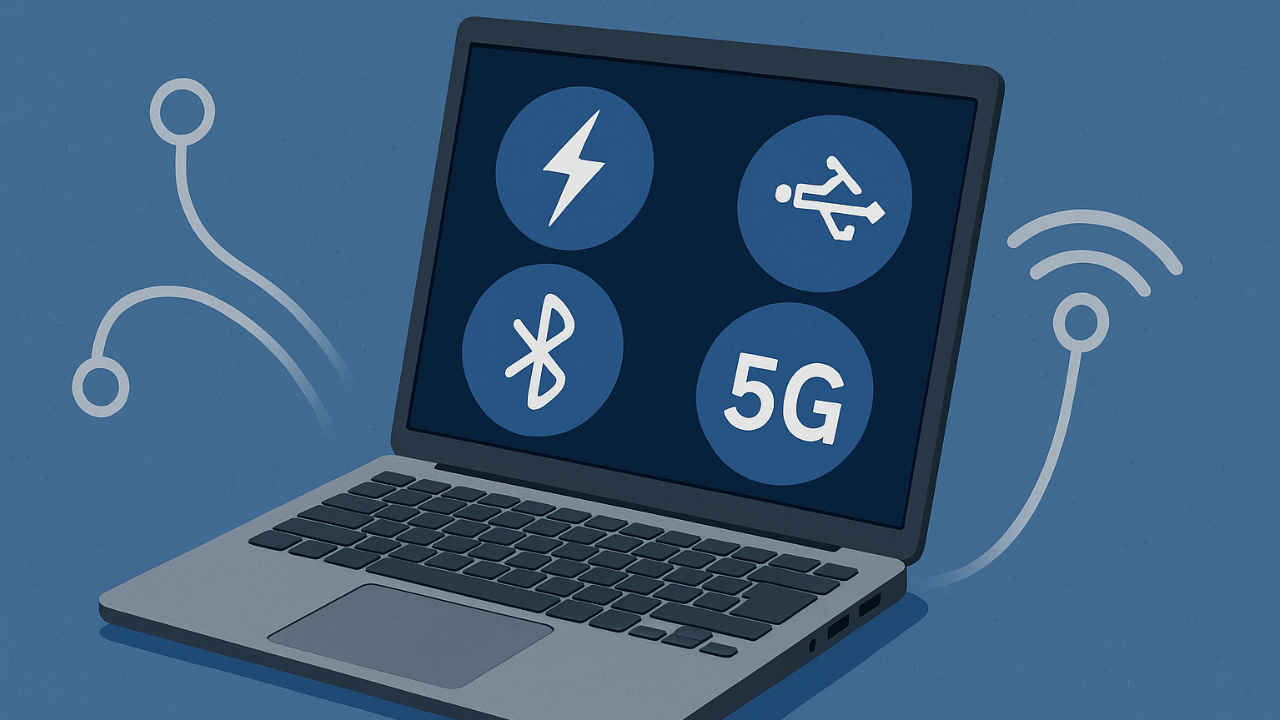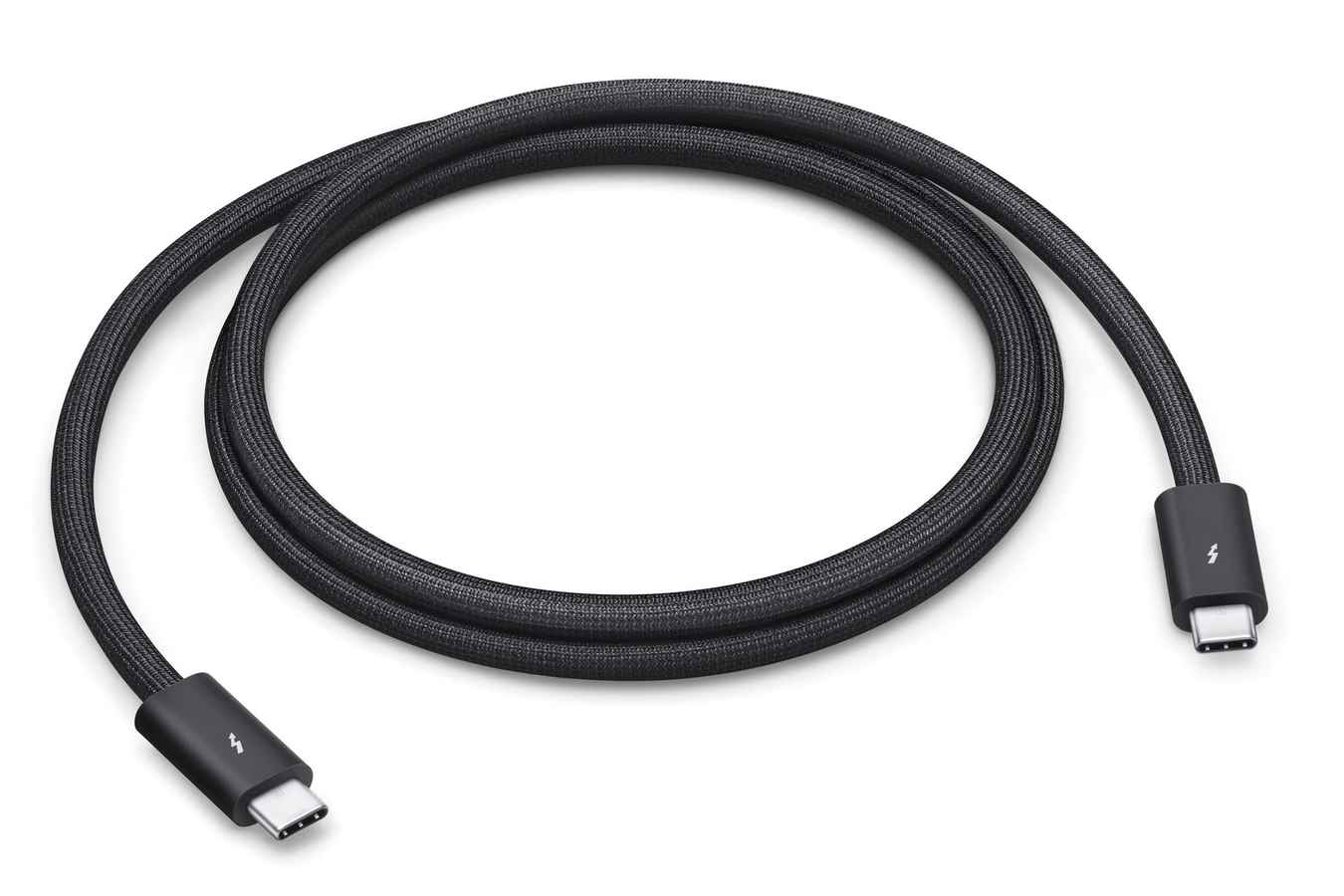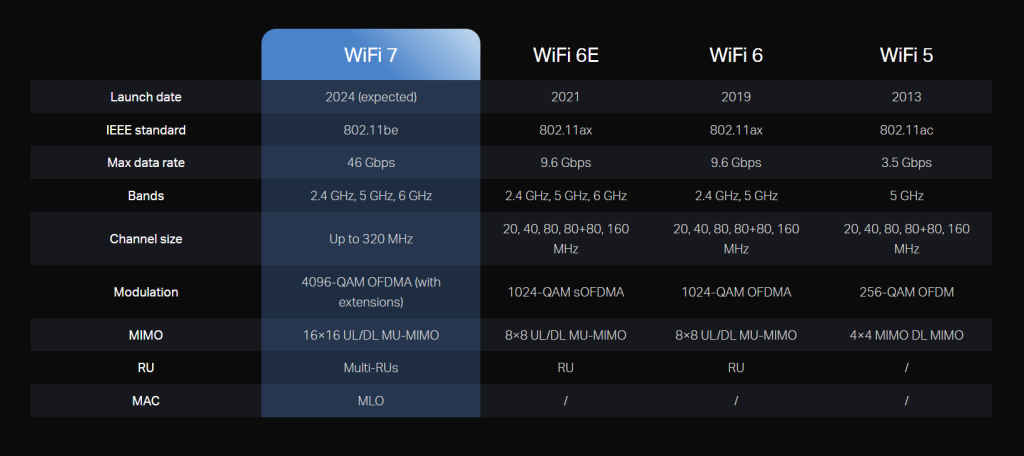What connectivity features to look for when choosing a laptop in 2025

Technology keeps evolving, and laptop buyers in 2025 now face a wealth of connectivity options to consider aside from the humble USB and HDMI ports. Modern laptops feature multiple connectivity technologies that are changing the way we work, play, and interact with our devices. From super-fast wired connections to uninterrupted wireless networking, these innovations are reshaping the computing landscape.
In this article, we’ll cover the most important connectivity features to consider when buying a laptop this year. We’ll explain how Thunderbolt 5 is setting a new benchmark for wired connectivity, why Wi-Fi 7 is a breakthrough for wireless performance, and how emerging standards like 6G cellular will keep you connected no matter where you are. Whether you’re a creative professional working with massive files, a remote worker juggling video calls, or a gamer who needs ultra-low latency, understanding these technologies is key to making a smart choice.
Thunderbolt 5

Thunderbolt 5 is a game changer in wired connectivity, providing speeds that once seemed unimaginable. With a bandwidth of up to 120 Gbps, which is three times faster than its predecessor, it’s designed to handle everything from multiple high-resolution displays to external GPU setups with ease much like its predecessor, just that it’s faster and can handle higher resolutions.
In practical terms, this means you could edit 8K video footage in real time while working on dual 4K monitors, all through a single cable. For content creators and video professionals, this level of performance can dramatically simplify workflows and boost productivity.
Moreover, Thunderbolt 5’s impressive power delivery (up to 240W) means fewer cables and less clutter on your desk. Although still in its early days, major brands such as Dell and Razer are already incorporating Thunderbolt 5 into their premium laptops. Expect to see this technology become common in mid-range models by the end of 2025.
Wi-Fi 7

While Thunderbolt 5 is revolutionising wired connections, Wi-Fi 7 is completely transforming wireless networking. Known technically as IEEE 802.11be, this new standard can theoretically reach speeds up to 46 Gbps, a five-fold increase over Wi-Fi 6. But it’s not just about the transfer speed: Wi-Fi 7’s enhanced features, such as wider 320 MHz channels and Multi-Link Operation (MLO), ensure stable, low-latency connections even in congested urban areas.
For gamers and VR enthusiasts, the low latency is particularly beneficial, making online gaming smoother and virtual experiences more responsive. Plus, with updated security protocols building on WPA3, Wi-Fi 7 is a secure option for both business and personal use. As the cost of integrating Wi-Fi 7 continues to drop, you can expect most new mid-range and high-end laptops to include it by 2025. Indians will have to wait a little longer to get access to Wi-Fi 7 since the radio spectrum that’s required for Wi-Fi 7 is currently restricted by the Government.
USB4 version 2.0

USB4 Version 2.0 quietly provides a balanced alternative that marries high performance with broad compatibility. Offering up to 80 Gbps of symmetric bandwidth or in an asymmetric configuration with 120 Gbps in one direction and 40 Gbps in the other, USB4 Version 2.0 is quite versatile. It also supports advanced features such as DisplayPort 2.1 and PCIe tunneling, this standard is designed to work across multiple operating systems and devices.
One of its biggest selling points is its wide compatibility. Unlike Thunderbolt, which is often tied to specific hardware ecosystems, USB4 Version 2.0 is designed for broad use, making it an attractive option for users who need flexibility. Additionally, with support for up to 140W charging, it minimizes the need for extra adapters, reducing clutter and making it easier to charge your devices on the go.
Bluetooth 6.0

Bluetooth might often be overlooked in the connectivity conversation, but its role remains crucial. The latest Bluetooth 6.0 introduces features such as enhanced channel sounding, which significantly improves location accuracy and enables applications like automatic device locking when you walk away from your laptop. This precise distance measurement means devices can interact more intelligently and securely.
For instance, imagine your laptop unlocking as you approach or seamlessly streaming high-quality audio to multiple devices without interference. Bluetooth 6.0 also focuses on power efficiency, ensuring longer battery life for both your laptop and connected peripherals.
5G and beyond
As cellular connectivity becomes standard in laptops, 5G networks now offer multi-gigabit speeds with very low latency. This is especially valuable for those who need a reliable connection when traveling or working remotely. And looking forward, 6G, which is still in its experimental stages, promises even faster speeds and near-zero latency, potentially enabling futuristic applications like holographic communication and real-time AI processing.
Manufacturers are already designing laptops with future-proof cellular compatibility, ensuring that as networks evolve, your laptop will remain connected and ready for the next generation of mobile internet.
Balancing Your Connectivity Needs
With so many options available, how do you choose the right mix of features? Start by evaluating your daily tasks. If you work with high-resolution media or need multiple displays, prioritize laptops with Thunderbolt 5 or USB4 Version 2.0 ports. If you’re often on the go, integrated 5G (and eventually 6G) might be crucial. And for those who rely heavily on wireless peripherals or seek seamless interactions between devices, Bluetooth 6.0 is a must-have.
Ultimately, the ideal laptop balances next-gen connectivity with other vital factors like processing power, battery life, and build quality. By understanding these new standards and aligning them with your needs, you can choose a laptop that not only meets today’s demands but is also ready for tomorrow’s innovations.
Sagar Sharma
A software engineer who happens to love testing computers and sometimes they crash. While reviving his crashed system, you can find him reading literature, manga, or watering plants. View Full Profile




